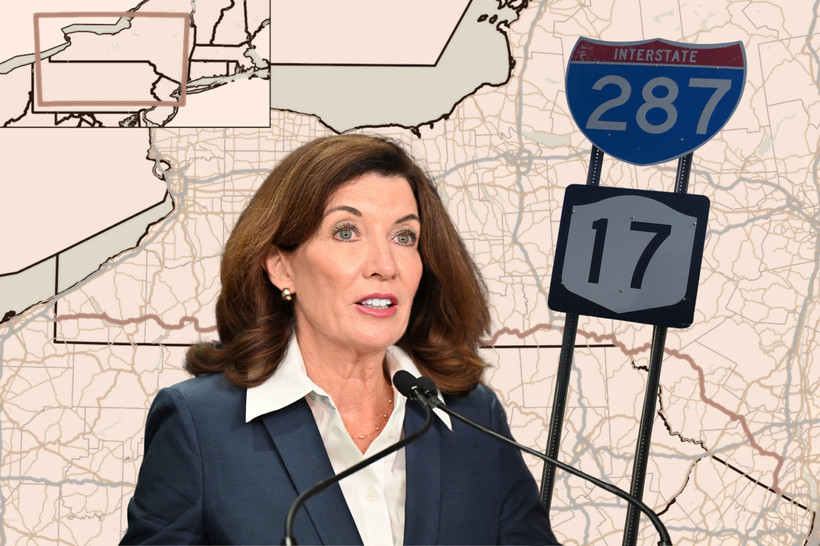A $1.3 Billion Project That Would Save Drivers Six Minutes Max
As the state’s plans to get New Yorkers out of their cars stall, Governor Hochul is championing a highway expansion in the Hudson Valley.

As the state’s plans to get New Yorkers out of their cars stall, Governor Hochul is championing a highway expansion in the Hudson Valley.

I hope this article helped you better answer the question that guides all of our journalism: Who runs New York? Before you click away, please consider supporting our work and making more stories like this one possible.
New York state is standing at a crossroads for climate action. After passing one of the nation’s most ambitious climate laws in 2019, the state is lagging far behind on its targets, struggling to meet deadlines to build renewable energy and clean up its buildings and roads. Other states are closely watching our progress, making decisions about their own climate plans based on New York’s ability to implement this legislation.
As New York’s only statewide nonprofit news publication, we’ve been scrutinizing the state’s climate progress. Our journalism exists to unpack how power works in New York, analyze who’s really calling the shots, and reveal how obscure decisions shape ordinary New Yorkers’ lives.
But we can't do this work without your help. We rely on reader donations to help sustain our outlet, and every gift directly allows us to publish more pieces like this.
Our work has already shown what can happen when those with power know that someone is watching, with my reporting prompting a state investigation and fine for a major corporation. I have more story ideas than I can count, but only limited resources to pursue all the leads that come across my desk.
If you’re able, please consider supporting our journalism with a one-time or monthly gift. Even small donations make a big difference.
Thank you for reading.


Nonprofits form the backbone of the state’s social service sector, and they may be getting some overdue relief in this year’s budget.
The legislature rejected Hochul’s central public safety policy priorities while embracing proposals to increase prison oversight.
In New York, half of CIU exonerations involve prosecutorial misconduct, but DAs rarely acknowledge who got it wrong.
Here’s where the Senate, Assembly, and governor stand on funding New York’s green transition.
In many cases, electrifying homes is cheaper, according to one new study.
The state is pushing ahead on all-electric buildings, but a draft update to the building code leaves out other key recommendations from the state’s climate plan.
Our team will be descending upon Albany on Tuesday. Here’s what they’ll be watching.
New York Focus reporter Sam Mellins reflects on what he learned this year, and teases what lies ahead for 2025.
New York has a little-noticed tool to shift billions of highway dollars to climate-friendly public transit projects. The governor doesn’t seem interested.